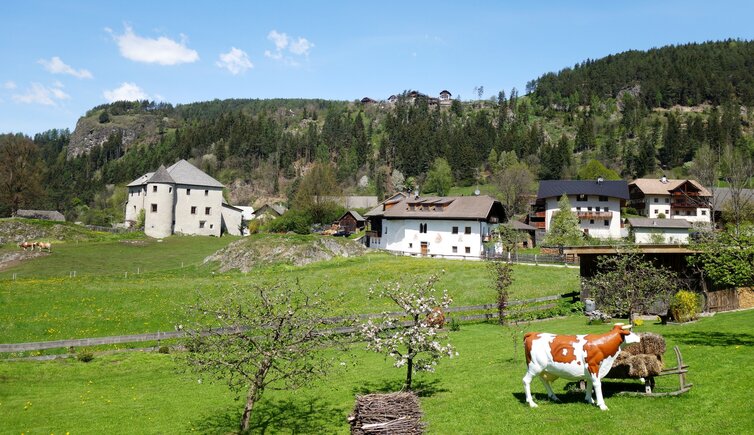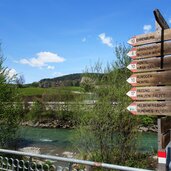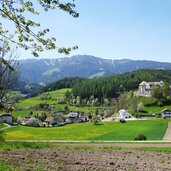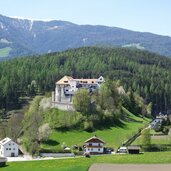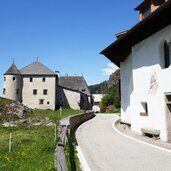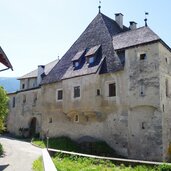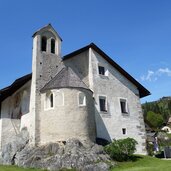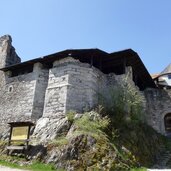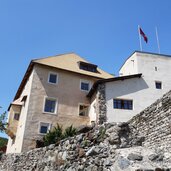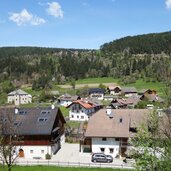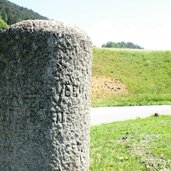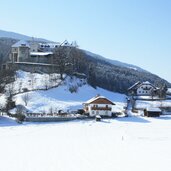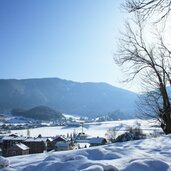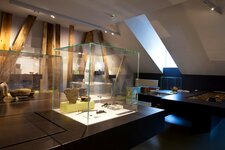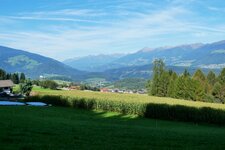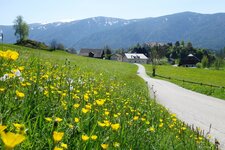A Roman milestone was found below the mighty complex of Badia Castle: Today, an exact reconstruction of it stands there
Image gallery: Castelbadia
Due to the construction of the Riggertal loop and safety-related works, sections of the Val Pusteria Railway will be closed until January 2026. A rail replacement bus service will be in operation.
The three main… read more
Castelbadia or Sonnenburg is a true journey into the past, with beautiful buildings such as Badia Castle, which towers majestically above the centre of the village. On the steeply sloping rocky hilltop, the crypt and the monastery church with its oversized Christ from the 12th century still tell of times gone by. Directly below the castle complex, now a hotel, a milestone from Roman times was found and is on display in the Tyrolean State Museum Ferdinandeum in Innsbruck: It was once erected for Emperor Marcus Opellius Severus Macrinus and his son Diadumenianus.
For eight centuries, the Benedictine nuns ruled over Val Badia from Badia Castle and exercised jurisdiction in Marebbe. After the dissolution of the monastery at the end of the 18th century, it temporarily became a military hospital during the Tyrolean wars of liberation. In the village today, the St. John in the Hospital Chapel can still be seen by a rock. A hospice was once located there. Another historic building is enthroned at the entrance to the village: the massive Hebenstreit manor house. Afterwards, neat farmhouses flank the village street, which has already seen a lot.
Castelbadia shows itself from its brightest sunny side. Especially the Archaeological Panorama Trail next to the Mansio Sebatum Museum, the hike through the green hills between Casteldarne and San Lorenzo, and the San Lorenzo-Castelbadia-Campolino Lap should be taken as suggestions to enjoy the surroundings in all tranquillity. In winter, a path leads you in 2 hours via the Mühlbach- and Brunnermoos biotopes to Santo Stefano at the foot of the Plan de Corones Skiing Area. The bus, on the other hand, connects Castelbadia and San Lorenzo every half hour.
